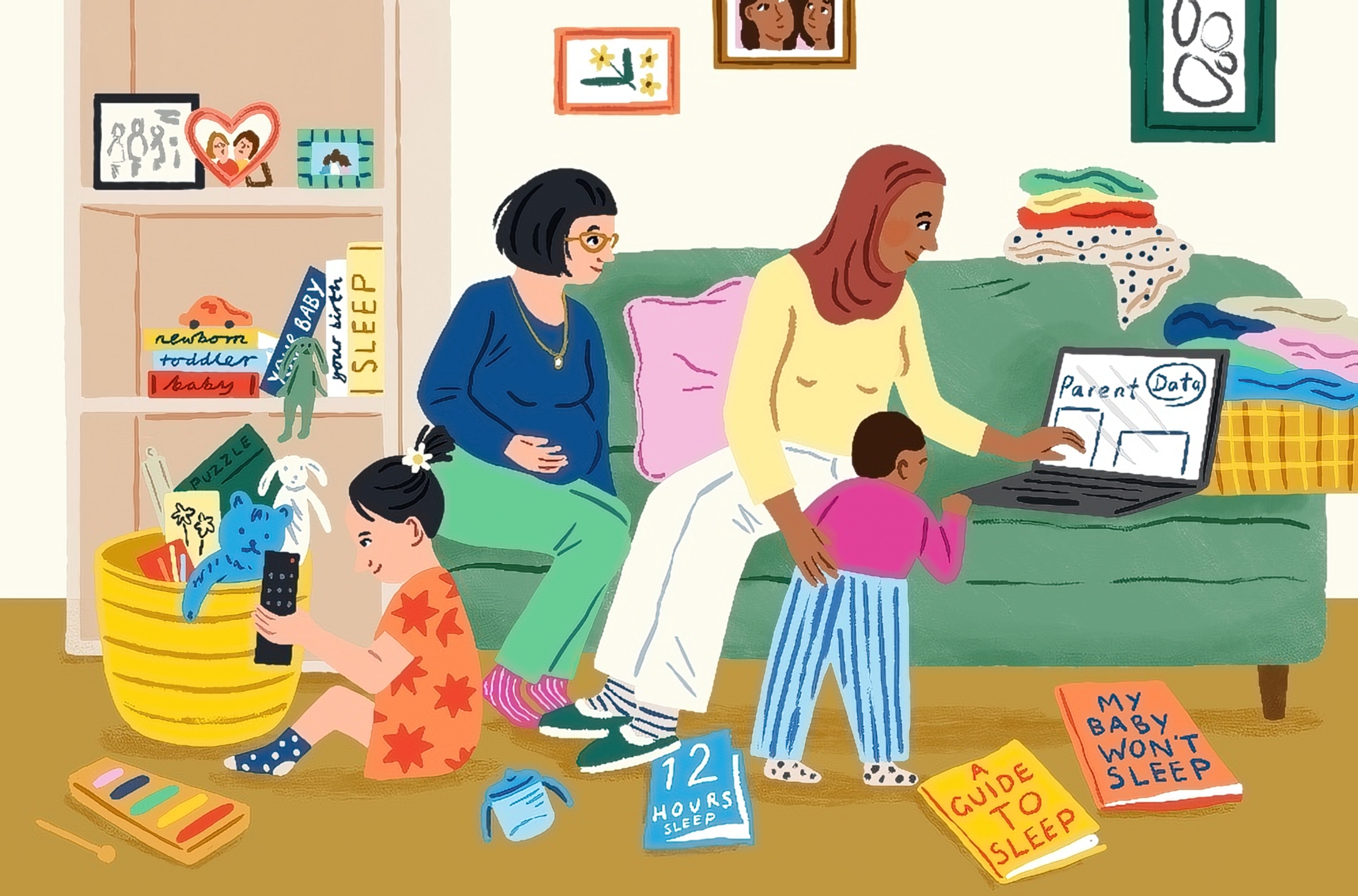It has been nicer weather, my kids are outside more, and we are cautiously and carefully considering some re-entry (with masks!) Yesterday, a meeting ended 25 minutes early and I went outside to plant my kale plants. Outdoor dining has reopened in Rhode Island. Basically, things are looking up just a teeny, tiny bit.
I am still thinking about COVID-19 about 99.97% of the time, but I thought the newsletter, at least, could take a break to revisit something I covered in Cribsheet. Namely, the issue of food allergies and how to prevent them. And, in the interest of adding something new, I thought it would be interesting to dig into new data on treating food allergies, if your child already has one.
(Note: if you like this, you might like Cribsheet, or Expecting Better. I know a lot of you are here for the COVID content, but in case you have non-pandemic pregnancy or parenting questions, check out the books!)
Preventing allergies: Early allergen introduction
When I give talks about Cribsheet, I usually rely on two examples. First, I talk about breastfeeding. And second, I talk about peanuts. It’s a good contrast, because I start by talking about the difficulties with learning from data on breastfeeding, but then end a bit more upbeat. Also, I just really, really like the story of the peanut allergy research. Here it is, slightly adapted from the book:
Gideon Lack is a researcher at King’s College London. He studies allergies in kids, especially allergies to peanuts. At some point, perhaps through discussions with colleagues in Israel, Dr. Lack got the impression that peanut allergies were much less common among children in Israel than in the UK. So in 2008 he published a paper testing this theory. Using a questionnaire, covering about five thousand children in each location and focusing on Jewish children in both Israel and the UK, he found that school-age children in the UK were about ten times as likely to be allergic to peanuts than children in Israel.
In the paper reporting these findings, Dr. Lack and his colleagues went beyond just showing the prevalence differences. They actually speculated as to why the differences existed: specifically, early peanut exposure. Children in Israel are more commonly exposed to peanuts early in life—there is a popular peanut-based early childhood snack called Bamba—and the researchers argued that this exposure may be the cause of lower incidence of peanut allergies in Israeli children.
Making this kind of claim based on these data is, to put it mildly, a bit of a stretch. A huge number of things differ between Israel and the UK! An obvious difference is diagnosis rate—what if even mild peanut allergies are diagnosed in the UK, and only severe ones in Israel?
And if the data had stopped there, we’d be left with a vaguely interesting fact and some unsatisfying speculation about why. What is great about this example is that the Lack team followed up with the gold standard: a randomized controlled trial.
In the years following their initial findings, Lack and his colleagues recruited a cohort of about seven hundred babies between four and eleven months old and randomized them into a peanut exposure group and a non-exposure group. Parents of children in the exposure group were told to expose their kids to a dose of peanuts—about 6 grams a week—in the form of either Bamba or regular peanut butter. Parents of children in the other group were told to avoid peanuts.
The researchers selected a group of children who were more likely to have peanut allergies than the general population—this was important to make sure they could draw strong conclusions even with a relatively small sample size. The kids were, of course, closely monitored for any adverse reactions.
The researchers finally published their findings in 2015 in the New England Journal of Medicine. I’ve graphed them below; they are striking.
Children who were exposed to peanuts were far less likely to be allergic to them at the age of five than children who were not. In the group that didn’t get peanuts, 17 percent of children were allergic to peanuts at age five. (Remember, this figure is higher than it would be in the general population because of the way the researchers selected their sample.) However, only 3 percent of the children who were given peanuts were allergic.
Since the study was randomized, there was no reason other than the peanut exposure that allergy rates would be different. The study also differentiated kids with higher and lower allergy risk (based on their baseline reaction to peanuts) and the differences show up in both groups.
This finding suggests that exposing children to peanuts early helps them avoid peanut allergies — and that these effects are big. In the wake of these peanut findings, the recommendations about exposure have changed completely. Early exposure to peanuts is now the normal recommendation, especially for children at risk for an allergy.
Although the data is not complete, it increasingly seems like this evidence extends to other common allergens as well. The vast majority of allergies result from eight food types: milk, peanuts, eggs, soy, wheat, tree nuts, fish, and shellfish. Even among these, the biggest culprits are milk, eggs and peanuts. Other research suggests that milk and eggs work similarly to peanuts.
All this points to the possible importance of introducing all these allergens early—probably as early as four months. (Milk can be introduced in the form of yogurt or cheese.)
Importantly, although the language here is about “introduction,” these studies include regular exposure as well. It is not enough to have your kid try peanut butter or eggs. You need to actually keep giving it to them regularly.
Which leads to the question: How?
This is a setting in which going slowly is a good idea. Try a little bit at first—only one allergic food in a given day—and see how they react. If nothing, give a little bit more. And so on until you get up to a normal amount.
This is a lot, especially since most babies don’t really eat much food anyway. To consistently expose them to peanuts and yogurt and eggs on top of everything else (what about the peas?) requires some logistical work. If you are daunted, and especially if you’re very concerned about these issues, there are some products that contain powdered forms of these foods and are meant to be mixed with breast milk or formula.
Treating allergies
It is easier to prevent than treat allergies, which is partly why this research is so valuable. But in the wake of the book and talking about this example so much, many people have reached out to ask about treatment. The prevention news is very new; the standard public health advice before this probably led to a lot of additional allergies. Moreover, even with great prevention, there are still people in that 3% bar.
The good news is that there are improvements in allergy treatment, as well. Over the last several years, the evidence has been building in favor of peanut “oral immunotherapy” (OIT) for treatment of peanut allergies. You can see a nice summary of this approach here.
OIT is an exposure-based approach. Peanut-allergic people are given small daily doses of peanuts, which are increased over time, to get to a moderate dose. Randomized studies show that this can train the body to have a less severe peanut reaction. In a study of preschool children, researchers showed 78% of children in the treatment group developed some peanut tolerance, versus virtually none of the control. This is a very large effect.
In the wake of this and other studies, the FDA in early 2020 approved a drug based on this theory called palforzia. It’s approved for treatment of peanut allergies in children aged 4 to 17. Basically, it’s a peanut powder in a carefully regimented dose, delivered in a combination of the doctors office and home dosage. It is worth noting that at the moment this drug is incredibly expensive; about $11,000 a year.
There are a few important caveats to all this.
- Do not try this at home. Serious allergic reactions can and did happen in all of these trials. The peanut powder doses are carefully calibrated, and exposure is monitored. This treatment can work, but has risks and should not be undertaken lightly.
- The goal of the treatment isn’t to be able to eat peanut butter sandwiches every day, but to avoid life-threatening reactions to small amounts of peanuts.
- This is a treatment, not a cure, and will need to be continued in some form indefinitely (at least that seems to be the current thinking).
The first drug here focuses on peanuts, but given the similar findings in prevention, it seems likely we’ll get exposure-based treatments for other allergens as well. Stay tuned!
Community Guidelines















